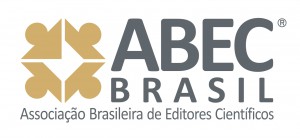Factors influencing mother-child-environment interaction in the breastfeeding process: a cross-sectional study
DOI:
https://doi.org/10.5216/ree.v26.76806Abstract
Objective: analyze the factors that influence the mother-child-environment interaction in the breastfeeding process. Methods: this is a cross-sectional study carried out in the Primary Health Care Network of a municipality in the interior of Maranhão, Brazil, with mothers of children up to one year old who were breastfeeding. Data was collected at the Basic Health Unit or in their households, between April and July 2021, using the Interactive Breastfeeding Scale (EINA, as per its acronym in Portuguese). Student's t and one-way ANOVA tests were used, with a p-value < 0.05. Results: the average total score on the scale was 210.75 (Standard Deviation - SD ± 16.95), indicating adequate interaction between mother-child-environment in the breastfeeding process. Having a higher level of education (complete higher education), being married and wanting to breastfeed were associated with mother-child-environment interaction in the breastfeeding process. Conclusions: higher levels of education, being married and wanting to breastfeed are associated with greater mother-child interaction in the breastfeeding process. The greater the desire to breastfeed, the greater the mother-child-environment interaction in the breastfeeding process. These findings make it possible to plan strategies to improve the identification of pairs at greater risk of early weaning, and to develop specific actions for caring for the predictors that interfere with the breastfeeding process.
Downloads
References
Mirghafourvand M, Kamalifard M, Ranjbar F, Gordani FRN. Relationship of breastfeeding self-efficacy with quality of life in Iranian breastfeeding mothers. J Matern Fetal Neonatal Med. 2017 July 20;31(20):2721-8. https://doi.org/10.1080/14767058.2017.1354368
Silva DIS, Barbosa ALO, Santana AL, Santos RVC, Souza VCGB, Farias JVC, et al. The importance of breastfeeding in the immunity of the newborn. Res Soc Dev. 2020 June 1;9(7):e664974629. https://doi.org/10.33448/rsd-v9i7.4629
Moraes IC, Sena NL, Oliveira HKF, Albuquerque FHS, Rolim KMC, Fernandes HIVM, et al. Perceção sobre a importância do aleitamento materno pelas mães e dificuldades enfrentadas no processo de amamentação. Rev Enferm Ref. 2020 June;2:e19065. https://doi.org/10.12707/RIV19065
Williams J, Namazova-Baranova L, Weber M, Vural M, Mestrovic J, Carrasco-Sanz A, et al. The importance of continuing breastfeeding during coronavirus disease-2019: In support of the World Health Organization statement on breastfeeding during the pandemic. J Pediatr. 2020 Aug;223:234-6. https://doi.org/10.1016/j.jpeds.2020.05.009
North K, Gao M, Allen G, Lee ACC. Breastfeeding in a global context: epidemiology, impact, and future directions. Clin Ther. 2022 Feb;44(2):228-44. https://doi.org/10.1016/j.clinthera.2021.11.017
Victora CG, Bahl R, Barros AJD, França GVA, Horton S, Krasevec J, et al. Breastfeeding in the 21st century: epidemiology, mechanisms, and lifelong effect. Lancet. 2016 Jan 30;387(10017):475-90. https://doi.org/10.1016/s0140-6736(15)01024-7
Universidade Federal do Rio de Janeiro. Estudo Nacional de Alimentação e Nutrição Infantil-ENANI-2019: Resultados preliminares – Indicadores de aleitamento materno no Brasil [Internet]. Rio de Janeiro: UFRJ; 2020 [cited 2023 Jan 04]. 9p. Available from: https://crn8.org.br/wp-content/uploads/2021/01/Relatorio-preliminar-AM_ENANI-2019-1.pdf
Pérez-Escamilla R. Breastfeeding in the 21st century: How we can make it work. Soc Sci Med. 2020 Jan;244:112331. https://doi.org/10.1016/j.socscimed.2019.05.036
Bourdillon K, McCausland T, Jones S. The impact of birth-related injury and pain on breastfeeding outcomes. Br J Midwifery. 2020 Jan 9;28(1):52-61. https://doi.org/10.12968/bjom.2020.28.1.52
Alvarenga SC, Castro DS, Leite FMC, Brandão MAG, Zandonade E, Primo CC. Fatores que influenciam o desmame precoce. Aquichan. 2017 Mar;17(1):93-103. https://doi.org/10.5294/aqui.2017.17.1.9
Maviso MK, Ferguson B, Kaforau LM, Capper T. A qualitative descriptive inquiry into factors influencing early weaning and breastfeeding duration among first-time mothers in Papua New Guinea’s rural eastern highlands. Women and Birth. 2022 Feb;35(1):e68-e74. https://doi.org/10.1016/j.wombi.2021.01.006
Camargo JDF, Modenesi TDSS, Brandão MAG, Cabral IE, Pontes MBD, Primo CC. Experiência de amamentação de mulheres após mamoplastia. Rev Esc Enferm USP. 2018 July 23;52:e03350. https://doi.org/10.1590/S1980-220X2017020003350
Primo CC, Brandão MAG. Interactive Theory of Breastfeeding: creation and application of a middle-range theory. Rev Bras Enferm. 2017 Nov-Dec;70(6):1191-8. https://doi.org/10.1590/0034-7167-2016-0523
Akpinar F, Can HÖ, Oran N. [Interactive Theory of Breastfeeding]. Journal of Midwifery and Health Sciences. 2022 Aug 30;5(2):85-92. https://doi.org/10.5152/JMHS.2022.1023898 Turkish.
Margotti E, Margotti W. Fatores relacionados ao Aleitamento Materno Exclusivo em bebês nascidos em hospital amigo da criança em uma capital do Norte brasileiro. Saúde debate. 2017 July-Sept;41(114):860-71. https://doi.org/10.1590/0103-1104201711415
Martins FA, Ramalho AA, Andrade AM, Opitz SP, Koifman RJ, Silva IF. Breastfeeding patterns and factors associated with early weaning in the Western Amazon. Rev Saude Publica. 2021;55:21. https://doi.org/10.11606/s1518-8787.2021055002134
Primo CC, Ferreira CI, Soares JS, Muri LAC, Lima EFA, Brandão MAG. Body image of women during breastfeeding: analysis supported by nursing theory. Rev Gaúcha Enferm. 2023 June 5;44:e20220051. https://doi.org/10.1590/1983-1447.2023.20220051.en
Brandão MAG, Barros ALBL, Primo CC, Bispo GS, Lopes ROP. Nursing theories in the conceptual expansion of good practices in nursing. Rev Bras Enferm. 2019 Mar-Apr;72(2):577-81. https://doi.org/10.1590/0034-7167-2018-0395
Ministério da Saúde, Secretaria de Atenção à Saúde, Departamento de informática do Sus (DATASUS). Número de nascidos vivos e óbitos infantis segundo município de residência no ano de 2019 [Internet]. Brasília: Ministério da Saúde [cited 2023 Jan 04]. Available from: http://tabnet.datasus.gov.br/cgi/deftohtm.exe?sinasc/cnv/nvma.def
Souza CON, Ruchdeschel T, Resende FZ, Leite FMC, Brandão MAG, Primo CC. Interactive breastfeeding scale: proposition based on the middle-range theory of nursing. Esc Anna Nery. 2018;22(3):e20170213. https://doi.org/10.1590/2177-9465-EAN-2017-0213
Primo CC, Henrique LR, Bertazo QS, Resende FZ, Leite FMC, Brandão MAG. Validation of the “Interactive Breastfeeding Scale”: theoretical and empirical analysis. Anna Nery Rev. 2020;24(1):e20190207. https://doi.org/10.1590/2177-9465-EAN-2019-0207
Carvalho RLR, Victoriano MA, Campos CC, Matos SS, Goveia VR, Ercole FF. Identificação de fatores que alteram a confiabilidade da temperatura axilar em relação à temperatura de cateter de artéria pulmonar. Reme: Rev Min Enferm [Internet]. 2019 Feb 17 [cited 2023 June 16];23:e-1267. Available from: https://periodicos.ufmg.br/index.php/reme/article/view/49720
Primo CC, Resende FZ, Garcia TR, Duran ECM, Brandão MAG. Subconjunto terminológico da CIPE® para assistência à mulher e à criança em processo de amamentação. Rev Gaúcha Enferm. 2018;39:e2017-0010. https://doi.org/10.1590/1983-1447.2018.2017-0010
Monteiro JRS, Dutra TA, Tenório MCS, Silva DAV, Mello CS, Oliveira ACM. Fatores associados à interrupção precoce do aleitamento materno exclusivo em prematuros. ACM arq. catarin. med. [Internet]. 2020 Jan-Mar [cited 2023 June 16];49(1):50-65. Available from: https://revista.acm.org.br/arquivos/article/view/643
Mutlu B, Erkut Z, Yıldırım Z, Gündoğdu N. A review on the relationship between marital adjustment and maternal attachment. Rev Assoc Med Bras. 2018 Mar;64(3):243-52. https://doi.org/10.1590/1806-9282.64.03.243
Ranch MM, Jämtén S, Thorstensson S, Ekström-Bergström AC. First-Time mothers have a desire to be offered professional breastfeeding support by pediatric nurses: an evaluation of the mother-perceived-professional support scale. Nurs Res Pract. 2019 Aug 6;873170. https://doi.org/10.1155/2019/8731705
Silva CF, Bezerra ICS, Soares AR, Leal ASLG, Faustino WM, Reichert APS. Implicações da pandemia da COVID-19 no aleitamento materno e na promoção da saúde: percepções das lactantes. Ciênc. saúde coletiva. 2023 Apr 25;28(8):2183-92. https://doi.org/10.1590/1413-81232023288.05882023
Wang S, Guendelman S, Harley K, Eskenazi B. When Fathers are Perceived to Share in the Maternal Decision to Breastfeed: Outcomes from the Infant Feeding Practices Study II. Matern Child Health J. 2018 June 30;22:1676–84. https://doi.org/10.1007/s10995-018-2566-2
Smith JP, Forrester R. Maternal time use and nurturing: Analysis of the association between breastfeeding practice and time spent interacting with baby. Breastfeeding Medicine. 2017 Jan 1;12(5):269-78. https://doi.org/10.1089/bfm.2016.0118
Moberg KU, Handlin L, Kendall-Tackett K, Petersson M. Oxytocin is a principal hormone that exerts part of its effects by active fragments. Med Hypotheses. 2019 Dec;133:109394. https://doi.org/10.1016/j.mehy.2019.109394
Barrera CM, Kawwass JF, Boulet SL, Nelson JM, Perrine CG. Fertility treatment use and breastfeeding outcomes. Am J Obstet Gynecol. 2019 Mar;220(3):261.e1-7. https://doi.org/10.1016/j.ajog.2018.11.1100
De Roza JG, Fong MK, Ang BL, Sadon RB, Koh EYL, Teo SSH. Exclusive breastfeeding, breastfeeding self-efficacy and perception of milk supply among mothers in Singapore: A longitudinal study. Midwifery. 2019 Dec;79:102532. https://doi.org/10.1016/j.midw.2019.102532
Downloads
Published
Issue
Section
License
Copyright (c) 2024 Revista Eletrônica de Enfermagem

This work is licensed under a Creative Commons Attribution 4.0 International License.














